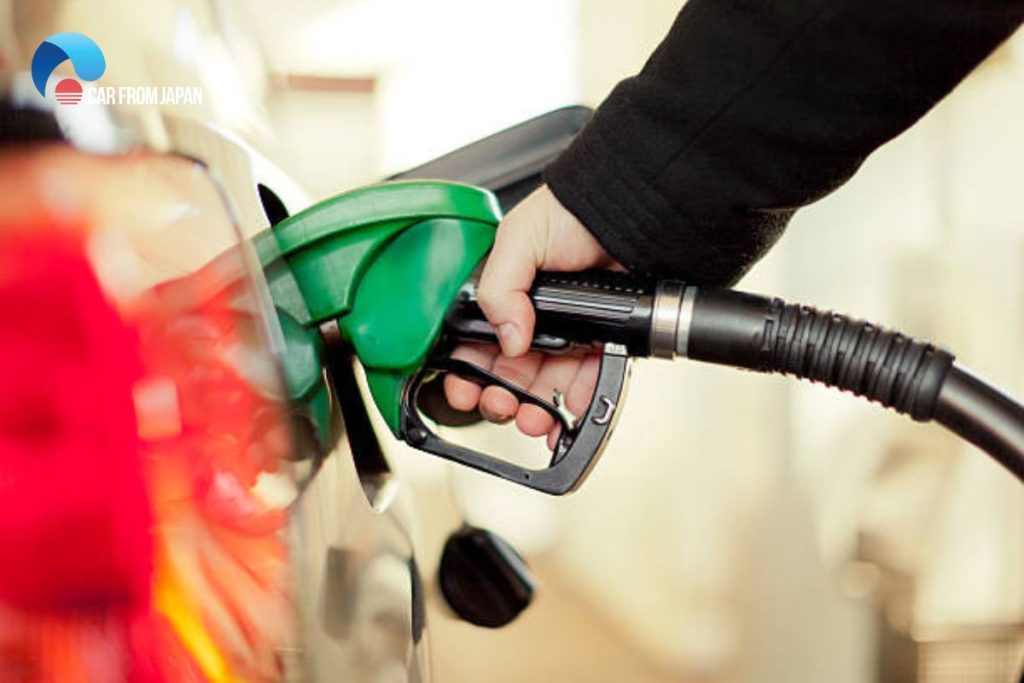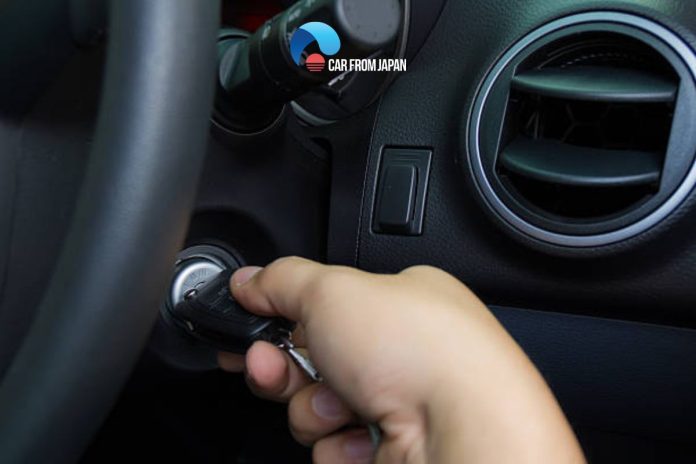Have you ever experienced a moment of frustration when you have a hard time starting your car after refueling at a gas station? We are sure it will leave you stranded and wondering what went wrong. However, fear not! If you clearly understand the reason and how to check, it will help you easily fix this problem. Let’s navigate through the common causes and the solution for the problem: your car won’t start after getting gas in the topic
Contents
Reasons Why Your Car Won’t Start After Getting Gas
The case of a car not starting after pumping gas can probably make many drivers confused and worried. The question is: Why does my car not start after getting gas?
Below are the main reasons why your car might refuse to start after refueling, so you can easily fix this situation:
- A faulty EVAP purge control valve
The most common culprit that makes your car won’t start after filling up with gas is that the EVAP purge control valve is stuck open. More detailed, the function of the EVAP system in the car captures and stores fuel vapors from the gas tank, preventing them from escaping into the environment. The purge control valve regulates the flow of these vapors into the engine for combustion.
If the EVAP purge control valve is stuck open or closed, it can disrupt the balance of fuel vapor flow, causing starting difficulties. A stuck-open valve can cause an excessive amount of fuel vapors to enter the engine, resulting in a flooded condition that prevents proper combustion. On the other hand, a stuck-closed valve can restrict the flow of fuel vapors, leading to a lean fuel mixture that can hinder the engine from starting.

- Battery connection problem
The battery terminals are responsible for connecting the battery to the vehicle’s electrical system, providing the necessary power to start your car engine. It is no longer uncommon for batteries to have corrosion at the terminals. Everyone knows that this greatly affects the ability to conduct electricity at the terminals.
When battery terminals become dirty or corroded, a layer of corrosion or dust forms on the metal surfaces of the terminals. This can prevent the flow of electricity between the battery and the rest of the electrical system, and the consequence is starting issues, or a complete failure to start the engine.
- Fuel pump issue
The fuel pump is responsible for sucking gasoline from the fuel tank to the injectors in the engine with a pressure of 30 – 85 PSI. So when the fuel pump is malfunctioning or faulty, gasoline is not supplied evenly to the engine combustion chamber. This can cause the fuel filter to become clogged and your vehicle will not be able to start.
- Dead battery
A weak or dead battery is the reason that causes the decrease in charge, and the result is that your car struggles to start after putting gas in. If your car won’t start after getting gas, it’s essential to consider the condition of the battery as a potential culprit.
Signs of a dead or weak battery may include dim headlights, a clicking sound when you turn the key, or no response from the electrical components when you try to start the vehicle.
- Bad gasoline
Poor quality gasoline often contains substances that are harmful to the engine: causing parts to wear out quickly, reducing engine power, affecting related systems such as the intake and exhaust systems…
If the car has difficulty starting after refueling, excluding causes such as a dead battery, or a faulty fuel pump… it may be due to problems with the fuel filter and fuel quality. Because if you use gasoline mixed with impurities, the car’s fuel filter system will be clogged with substances in the gasoline.
- Fuel system contamination
Sometimes, contaminants such as dirt, debris, or water can find their way into the fuel tank during the refueling process. If these contaminants make their way into the fuel lines, they can disrupt the fuel flow and cause starting issues. Contaminated fuel filters or injectors can also hinder the proper functioning of the fuel system.
How To Fix When Your Car Won’t Start After Getting Gas?
Your gas tank is full and you’re ready to start driving but the engine won’t turn over. What action should you take? We will share several methods in this part that can help you to handle this issue more easily:
Retry to start your car
If the engine doesn’t start on the first attempt, release the ignition and wait for a few moments before trying again. You can repeat the process of turning the ignition while lightly pressing the gas pedal until the engine starts.

Considering the EVAP system
As we talked about above, a malfunctioning EVAP system can disrupt the fuel flow and cause starting difficulties. Check for any loose or damaged EVAP system components, such as the gas cap, purge control valve, or charcoal canister.
For example: To determine if the EVAP purge control valve is the culprit, you may notice additional symptoms such as a strong odor of fuel or an illuminated “Check Engine” light on the dashboard. Diagnostic trouble codes (DTCs) related to the EVAP system may also be present when the vehicle is scanned with an OBD-II (On-Board Diagnostic) scanner.
If you suspect a faulty EVAP purge control valve, it is advisable to consult a qualified mechanic or automotive technician. They will have the necessary tools and expertise to diagnose the issue accurately.
Identify the fuel level
Ensure that you have sufficient fuel in the tank. Sometimes, the fuel gauge may be inaccurate, leading to a no-start condition due to an empty tank. Add fuel if necessary.
Additionally, in this step, you should use the fuel lines, fuel filter, and fuel injectors for any signs of damage, clogs, or leaks. A clogged fuel filter or a malfunctioning fuel injector can prevent the engine from receiving the proper amount of fuel.
Check the battery
Continued with inspecting all battery connections and the battery terminals for corrosion or loose connections. Clean the terminals if necessary and ensure they are securely tightened. If the battery is dead or weak, try jump-starting the car using jumper cables and a vehicle with a fully charged battery.
Besides, let’s apply a thin layer of petroleum jelly or dielectric grease to the clean terminals to help prevent future corrosion. Reconnect the positive (+) terminal first, followed by the negative (-) terminal. Ensure the clamps are securely tightened.
Watch more this video to know how to fix this issue:
Sum Up
So, the next time you find yourself stranded at the gas station with a car that refuses to cooperate, don’t despair. Remember the potential culprits we’ve explored: a loose gas cap, a flooded engine, a faulty fuel pump, or even a clogged fuel filter. Armed with this knowledge, you can troubleshoot the issue with confidence, potentially saving yourself a tow and a hefty repair bill.



